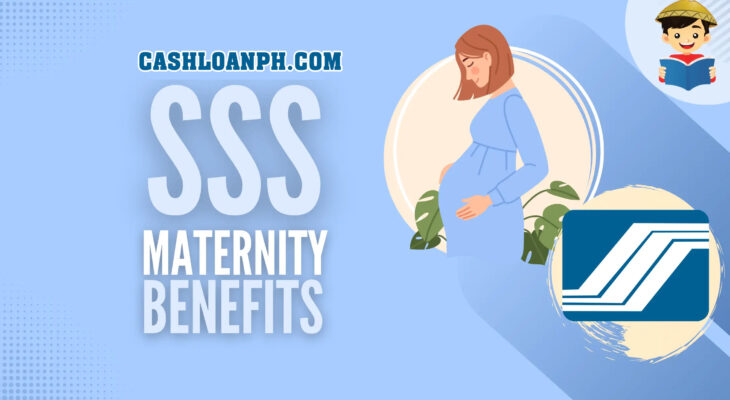SSS provides cash allowances for maternity benefits to women who are unable to work due to childbirth or miscarriage/emergency termination of pregnancy. This benefit is available to all female SSS members who consistently pay their monthly contributions, regardless of their employment status. In addition, this benefit is given on top of their regular SSS benefits, which have their own calculation and entitlement.
Who qualifies for the SSS Maternity Benefit?
To be eligible for the SSS maternity benefit, the female member must meet the following requirements:
- The member should have paid at least three (3) months of contributions within the 12-month period immediately before the semester of her childbirth or miscarriage/emergency termination of pregnancy.
- For employed members, their employers should be informed of the pregnancy.
- For self-employed, separated from employment, and OFWs, SSS should be informed of the pregnancy.
SSS maternity benefit application, requirements, and reimbursement process
The process of applying for SSS maternity benefits involves two distinct procedures: the notification process and the claims process.
- Notification Process The notification process should be completed at least 60 days before the expected delivery date or within 60 days from the date of the miscarriage or emergency termination of pregnancy. The notification process involves submitting the following documents to the SSS:
- Maternity Notification Form (SSS Form MAT-1) that can be downloaded from the SSS website or obtained at any SSS branch
- Proof of pregnancy, such as a medical certificate or ultrasound
- If employed, proof of notification to the employer
- Claims Process After giving birth or experiencing a miscarriage or emergency termination of pregnancy, the next step is to file a maternity benefit claim. The claims process should be done within ten (10) years from the date of delivery or miscarriage. It involves submitting the following documents to the SSS:
- Maternity Reimbursement Form (SSS Form MAT-2) that can be downloaded from the SSS website or obtained at any SSS branch
- Child’s Birth Certificate or Certificate of Fetal Death, if applicable
- SSS ID or two valid IDs
The reimbursement process typically takes 10 to 30 working days, and the cash benefit is either directly credited to the member’s bank account or issued as an SSS check.
It is essential to note that the computation of the maternity benefit amount is based on the member’s average monthly salary credit and the number of days of maternity leave. Additionally, the SSS maternity benefit is given on top of the member’s regular SSS benefits, which also have their own computation and entitlement.
Overall, by completing both the notification and claims process, SSS members can receive the maternity benefit they deserve to help ease the financial burden during childbirth or miscarriage/emergency termination of pregnancy.
How to submit maternity notifications online (for self-employed, recently separated from employment, and voluntary members)?
Here are the step-by-step instructions on how to submit maternity notifications online for self-employed, recently separated from employment, and voluntary SSS members:
- Visit the SSS website.
- Log in to your account using your user ID and password.
- Click the “e-Services” tab.
- Click the “Submit Maternity Notification” option.
- Provide the necessary information, such as your SSS Number, Expected Date of Delivery, and Allocation of Maternity Leave Credits for each employee-member.
- Use the corresponding button to either add another employee, edit, delete, or cancel the transaction.
- Once you have completed the report, scroll down and click “Submit List” to submit the list of employee’s maternity notification.
- You can also click “Print” to obtain a copy of the created notification.
- A transaction number will be issued as proof of the online transaction and notification submitted. You can either copy the transaction number, print the acknowledgment page, or check the email sent to your registered email address for reference.
By following these simple steps, self-employed, recently separated from employment, and voluntary SSS members can conveniently submit their maternity notifications online without the need to visit an SSS branch office.
How to file maternity benefits reimbursement
If you are eligible for maternity benefits, you can file for reimbursement in person at any SSS branch office. Here’s how to file for reimbursement:
- Compile and accomplish the following requirements:
- For employed members: Maternity Notification Form duly stamped and received by SSS, Maternity Reimbursement Form, UMID or SSS biometrics ID card or two (2) other valid IDs, both with signature and at least one (1) with photo and date of birth.
- For separated members: Maternity Reimbursement Form, Certification from the last employer showing the effective date of separation from employment or notice of company’s closure/strike or certification from the Department of Labor and Employment that the employee or employer has a pending labor case, Certification that no advance payment was granted (if confinement days applied for are within or prior to separation), UMID or SSS biometrics ID card or two (2) other valid IDs, both with signature and at least one (1) with photo and date of birth.
- For self-employed/voluntary members: Maternity Notification Form duly stamped and received by SSS, Maternity Reimbursement Form, UMID or SSS biometrics ID card or two (2) other valid IDs, both with signature and at least one (1) with photo and date of birth.
- Additional Requirements: Normal delivery – certified true or authenticated copy of the duly registered birth certificate. In case the child dies or is a stillborn, duly registered death or fetal death certificate. Cesarean delivery – certified or authenticated copy of the duly registered birth certificate and certified true copy of operating room record/surgical memorandum. Miscarriage or abortion – obstetrical history stating the number of pregnancies certified by the attending physician and dilatation and curettage (D&C) report for incomplete abortion, pregnancy test before and after abortion with the age of gestation, and hystopath report for complete abortion.
- Once you have the necessary documents, visit the nearest SSS branch office and submit your claim.
- Your claim will be processed and reimbursed by the branch where you are registered.
- After processing, the SSS will notify you via text message or email regarding the status of your claim.
- The reimbursement will be credited to your nominated bank account or paid via check.
By following these simple steps, you can file for reimbursement of your maternity benefit and receive your entitlement as soon as possible.
How do you calculate the SSS maternity benefit?
To calculate the SSS maternity benefit, you need to determine the member’s Average Daily Salary Credit (ADSC). This is equivalent to the member’s Average Monthly Salary Credit (MSSC) divided by 180. The maternity benefit is then computed as 100% of the member’s ADSC, multiplied by either 60 days for normal delivery or miscarriage, 78 days for cesarean section delivery, 120 days for a solo parent under R.A. 8972, or 105 days plus 15 days.
Here are some key terms to understand regarding SSS maternity benefits:
- Semester: refers to a period of two consecutive quarters that ends in the quarter when the sickness (pregnancy) occurs.
- Quarter: refers to a period of three consecutive months that ends in March, June, September, or December.
- Monthly salary credit: refers to the gross salary for a particular month.
- Semester of contingency: refers to a period of two consecutive quarters during which the SSS member is pregnant and eligible for maternity benefits.
The following steps describe how SSS computes maternity benefits:
- Exclude the semester of contingency.
- Count 12 months backwards from the month before the semester of contingency.
- Identify the six highest monthly salary credits within the 12-month period. A table for the salary credits can be referred to.
- Add the six highest monthly salary credits to obtain the total monthly salary credit.
- Divide the total monthly salary credit by 180 days to determine the average daily salary credit, which is equivalent to the daily maternity allowance.
- Multiply the daily maternity allowance by 60 days (for normal delivery or miscarriage) or 78 days (for cesarean section delivery) to get the total amount of maternity benefit.
Here’s an example to help illustrate how the SSS computes maternity benefits:
Suppose an SSS member gave birth in December 2020 and applied for a maternity benefit. The semester of contingency would be from July 2020 to December 2020. To compute the benefit, we need to look back 12 months from June 2020 (the month before the semester of contingency) to July 2019. Let’s assume that the six highest monthly salary credits in that period are PHP15,000 each. Thus, the total monthly salary credit would be PHP90,000 (PHP15,000 x 6).
We can then compute the daily maternity allowance by dividing the total monthly salary credit by 180 days, which is equivalent to PHP500 per day. Multiplying this by 60 days (for normal delivery/miscarriage/ectopic pregnancy not requiring an operation) gives a total maternity benefit of PHP30,000.
For caesarian cases or ectopic pregnancy requiring an operation, which have a longer recovery period of 78 days, the total maternity benefit would be PHP39,000 (PHP500 x 78).
Rephrased:
Reimbursement procedures differ depending on whether the member is an employer or self-employed/voluntary member.
For employed members:
The employer must give the maternity benefit to qualified employees within 30 days from the start of the employee’s maternity leave. The SSS will then reimburse the employer 100% of the determined amount. If the employer fails to pay the required contributions or inform the SSS, the employer will be obliged to pay damages equal to the benefits the employee should have received.
For separated/voluntary/self-employed members:
The SSS will pay the benefit directly to the member’s bank account. A female member cannot receive sickness benefit for 60 days after giving birth or suffering a miscarriage, or 78 days after a cesarean delivery, during which she has already received the maternity benefit. No member is entitled to two benefits for the same period.



![Top 200 Free Finance Apps in Philippines [Latest Update] Top 200 Free Finance Apps in Philippines [Latest Update]](https://cashloanph.com/wp-content/uploads/2023/05/finance-apps-in-philippines-cashloanph-438x246.jpg)
